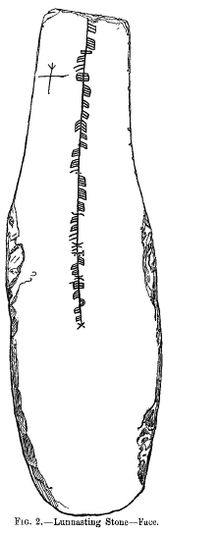
The modern names of Scottish islands stem from two main influences. There are many names that derive from the Scottish Gaelic language in the Hebrides and Firth of Clyde. In the Northern Isles most place names have a Norse origin. There are also some island place names that originate from three other influences, including a limited number that are essentially English language names, a few that are of Brittonic origin and some of an unknown origin that may represent a pre-Celtic language. These islands have all been occupied by the speakers of at least three and in many cases four or more languages since the Iron Age, and many of the names of these islands have more than one possible meaning as a result.[Note 1]
Scotland has over 790 offshore islands, most of which are to be found in four main groups: Shetland, Orkney, and the Hebrides, sub-divided into the Inner Hebrides and Outer Hebrides. There are also clusters of islands in the Firth of Clyde, Firth of Forth, and Solway Firth, and numerous small islands within the many bodies of fresh water in Scotland including Loch Lomond and Loch Maree.
The earliest written references to Scottish islands were made by authors in Classical antiquity. Many of the names for larger islands show some continuity although few of the names they identified for the smaller ones are cognate with the modern ones. Later writers such as Adomnán and the authors of the Irish annals also contributed to our understanding of these early toponyms.
- ^ M'Lauchlan, Rev. Thomas (Jan 1866) "On the Kymric Element in the Celtic Topography of Scotland". Proceedings of the Society of Antiquaries of Scotland. Edinburgh, VI Part 2, p. 318
Cite error: There are <ref group=Note> tags on this page, but the references will not show without a {{reflist|group=Note}} template (see the help page).